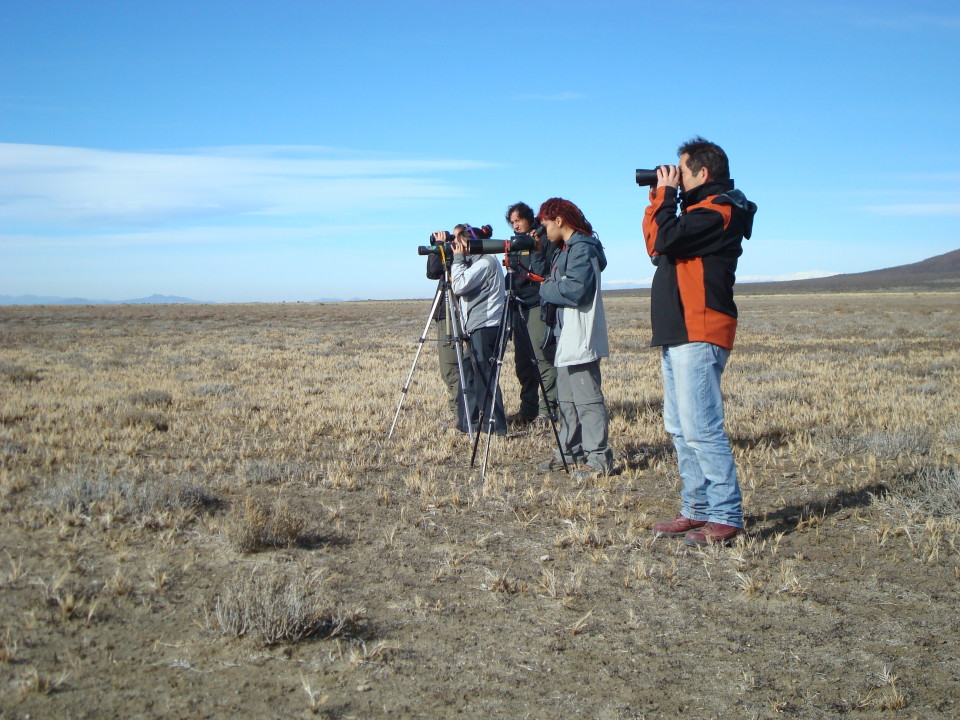
Celebrating 50 years of the International Waterbird Census in Laguna Llancanelo, Argentina
-
Species
Thousands of flamingos, swans, ducks and coots can be found in the Llancanelo lagoon, the site chosen to commemorate the 50th Anniversary of the International Waterbird Census (IWC) and the 26th Anniversary of the Neotropical Waterbird Census (CNAA), which took place on 21-22 July.
The Provincial Reserve and Ramsar Site Llancanelo Laguna is located in the south-central province of Mendoza. This is one of the most important wetlands in Argentina for concentrations of waterbird, exceeding 50,000 individuals in winter and 150,000 individuals in the summer, which is why the lake was declared a Ramsar site in 1995. It includes populations of flamingos, and swans nest on the site.

The celebration of the 50th Anniversary of the International Waterbird Census began with a lecture by Daniel Blanco, director of Fundación Humedales, the Argentina office of Wetlands International, at the University campus of Malargüe city. During the event he explained that the International Waterbird Census led by Wetlands International has become one of the most valuable worldwide waterbird monitoring programmes carried out by citizens. The census covers all aquatic birds, including endangered species and covers a wide range of freshwater and coastal wetlands that are important at a national and international level.
“In South America, the census began in 1990 under the name Neotropical Waterbird Census. The counts are made twice a year, currently 400 sites in nine countries: Argentina, Chile, Brazil, Uruguay, Colombia, Ecuador, Paraguay, Bolivia, Venezuela. More than 500 volunteers from the region are involved and identify annually about 2,000,000 waterbirds,” explained Daniel Blanco.
This event also included a theoretical and practical mini-workshop on census and waterbird monitoring. Heber Sosa, focal point of Fundación Humedales in Mendoza province, led this activity, which involved provincial rangers, students and officials of the Superior Technician Program in Nature Conservation of Mendoza (TECONA) based in Malargüe. The celebration ended with a visit to Llancanelo lagoon the next day, where counting practices were carried out using different methods.
The meeting also lay the groundwork to formalize a waterbird monitoring programme for the Ramsar Site Laguna Llancanelo, in the framework of a new management plan, which will contribute to the Neotropical Waterbird Census.
